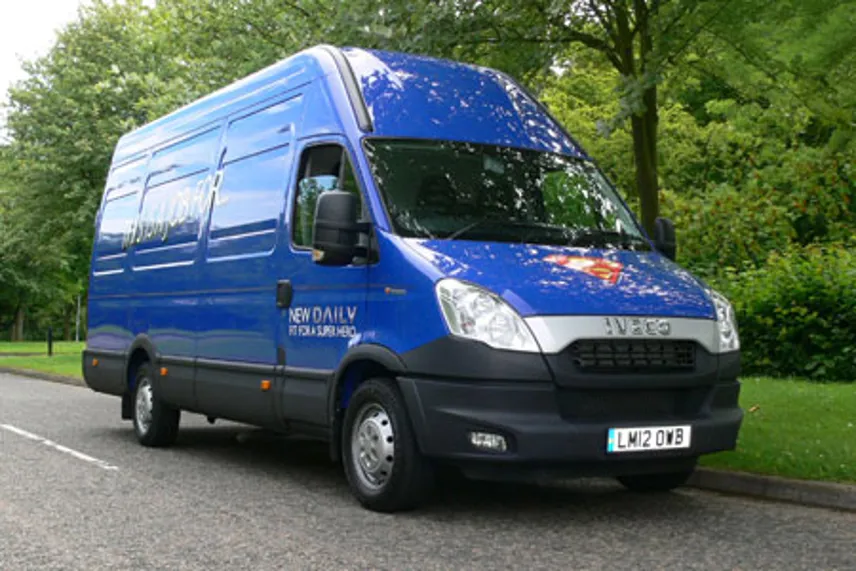Review
When it comes to 3.5-tonne GVW vans, there is nothing, but nothing, to beat the vehicle on test here in terms of size and strength.
With more than 17 cubic metres of space in the back, a stonking 3.0-litre twin turbo 205bhp powerplant under the bonnet and a massive ladder frame chassis underneath, the Daily 35S21 is the king of the sector.
The picture says it all – clad in dark metallic blue and boasting about its super heroic capabilities in bold decals, no-one will be in any doubt about what this vehicle is all about.
But who on earth in fleet would buy such a titan – which incidentally weighs in at £34,170 ex-VAT once you’ve added in all the extras that our test vehicle had?
On paper, any firm which carries full loads up and down the motorway and needs to get things delivered PDQ.
However, there is a rather thorny problem. There may be 17cu m of space in the back but payload is just 1,145kg, which means that unless you are carrying a consignment of feathers you are likely to overload this vehicle just by covering the floor with cargo. It renders the loadspace unusable.
To keep fleets on the right side of the law, we recommend the fitment of a weighing system which alerts the driver when the vehicle hits its limit.
The Daily was revamped a year ago and is available in weights which range from 3.5 tonnes GVW to 7.0 tonnes.
It features new, stylish looks at the front and under the bonnet the engines, either 2.3-litres or 3.0-litres, are 10% more fuel-efficient than the old ones.
Despite its massive power output our test van still manages to return a decent 34.8mpg on the combined cycle.
Our test model is the largest and most powerful on offer and came with extras such as a reversing camera (a handy safety extra on such a large vehicle), an air sprung seat, climate control and a coated plywood floor, which all come as part of two option packs at £1,440 and £890 respectively.
Behind the wheel
With a massive 205bhp under its bonnet we were expecting some kind of fire-breathing monster.
But the power is delivered in such a smooth way right up the rev range that one could be pardoned for thinking there was less oomph than there actually is.
But once you start pushing things, up a steep hill with a full load on board, or on the motorway, you realise just how powerful this titan is.
In fact, our test model came with a three-quarter load of gravel in the back and we didn’t even realise there was anything aboard until we took a glance in the rear end!
We were mightily impressed not only by its sheer power, but also by its admirable road manners. Despite being more than seven metres long, once on the road you could for all the world be driving something much smaller.
Of course, low-speed manoeuvring can be tricky, especially if, like me, you live in a cul-de-sac: on a couple of occasions I had to ask a neighbour to move his car so that I could turn round.
We can assume that drivers of vehicles like this are going to be behind the wheel all day – and a fine place that cab turns out to be for long-distance work.
The wonderful air sprung seat in our test model offered firm support from the knees to the neck and included plenty of lumbar support.
The cab is liberally sprinkled with cubby holes, including overhead shelving and those all-important coffee and cup holders and drinks bottle bins in the doors.
Meanwhile, the mirrors look like they come from the 44-tonne Stralis and give a fantastic view of what’s behind.
In the rear, even six-footers like me can stand up with headroom to spare and there are any number of lashing eyes and hooking points.
Verdict
A great vehicle from the driver’s perspective but for fleet managers, one of the smaller engines will do the job just as well.
















